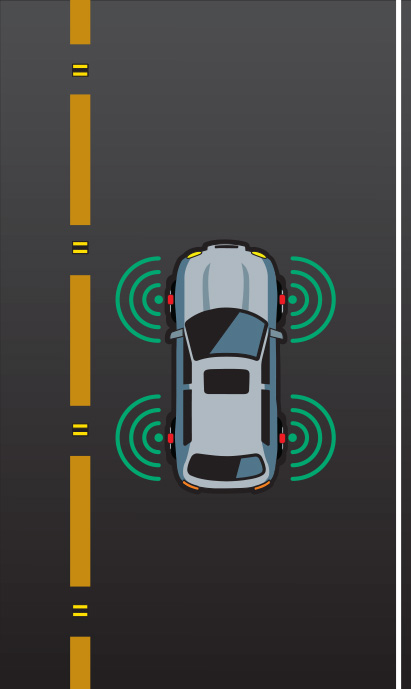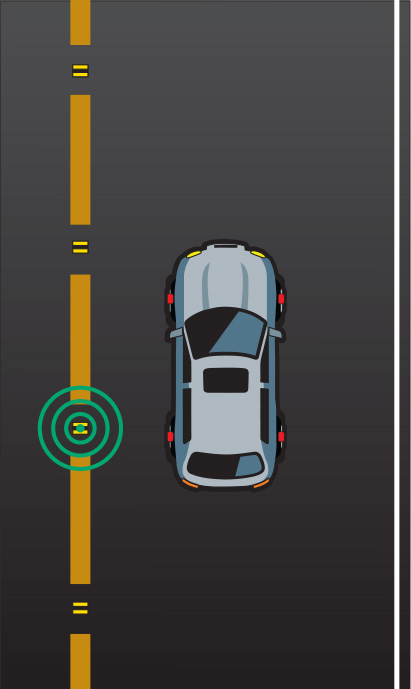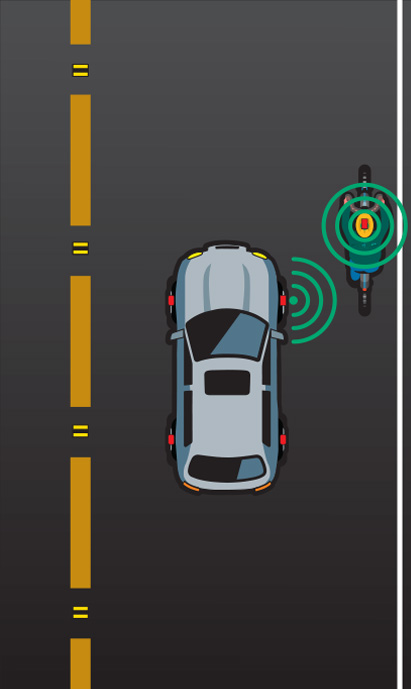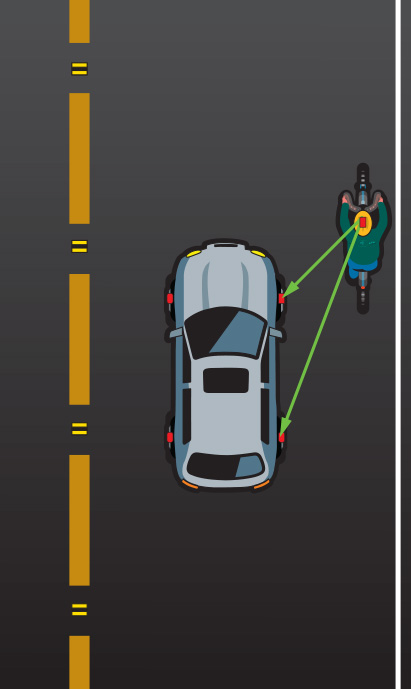RF-eye Utilizes Current Mandated Vehicle Technology
Tire Pressure Monitoring Systems Read RF-eye
Tire Pressure Monitoring Systems (TPMS) have been mandated in the US since 2008. These systems are located in the wheel wells (red sensors on images) and only use about 40% of their bandwidth. Utilizing separate frequency channels, the RF-eye system can utilize this infrastructure without jeopardizing tire pressure safety. Additional sensors can be easily added to the front and read of the vehicle to detect objects in front and behind the vehicle.
Transformation: Vehicles utilize a separate TPMS channel to interrogate and receive data from RF-eye beacons, providing vehicles with location data and road information. This local, accurate, redundant information is available without connectivity and since the beacons are passive, even in widespread power outages.
Triangulation Gives Object Location
RF interrogation signals can also light up RF-eye beacons embedded in objects utilized by other road users. In future manufacturing runs, stronger RF interrogation signals may be issued from the front or rear of the vehicle to light up beacons in the distance. TPMS sensors in the wheel wells will be able to detect these signals.
Transformation: Using multiple TPMS sensors on the vehicle, the computer calculates the Time-of-Flight or Time-of-Arrival to different sensors. This information allows the vehicle to triangulate the distance and angle of the object from the vehicle. Multiple measurements provide speed and velocity of the object.




